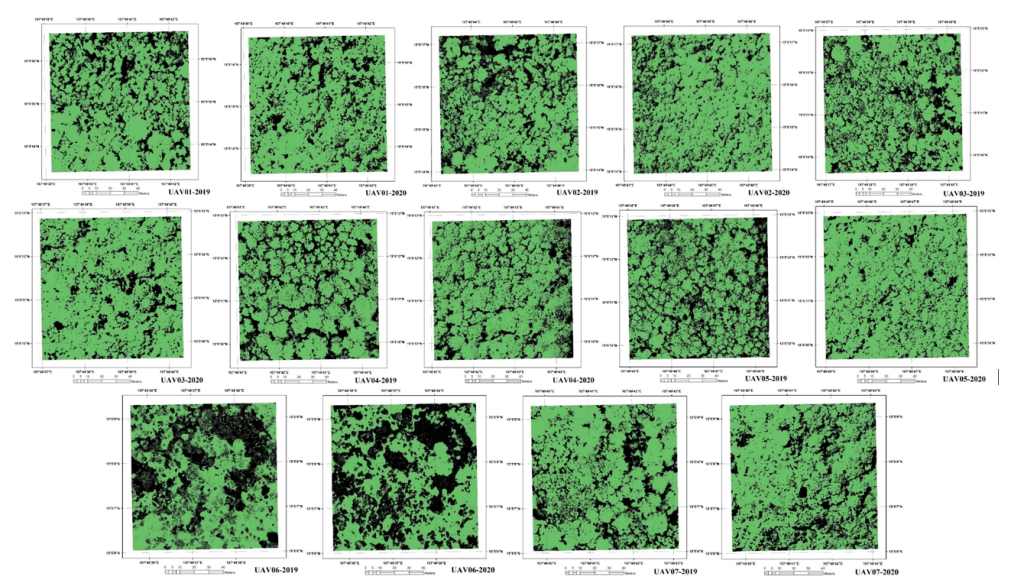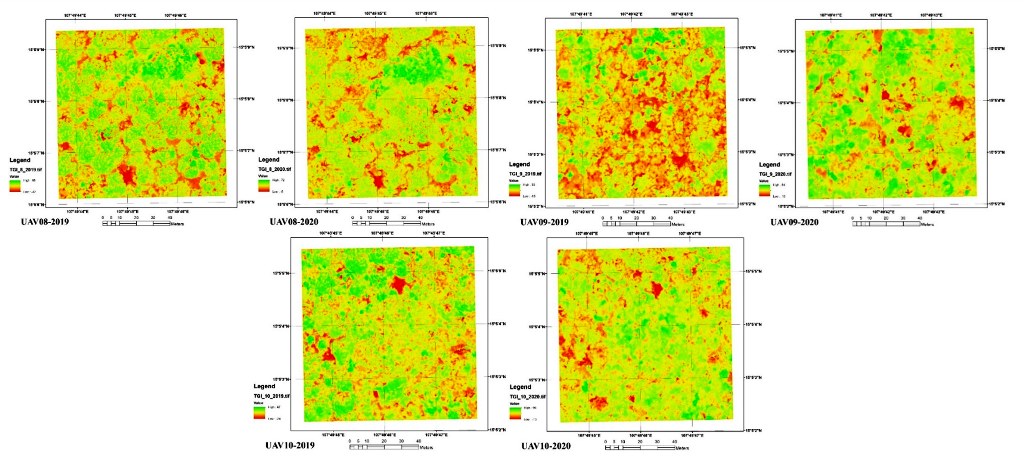Assessment of seasonal dynamics in tropical rain forest at Ngoc Linh natural reserve, kontum province, based on uav data
09/04/2021Seasonal dynamics in tropical forests are closely related to the variation in forest canopy gaps. The forest canopy gaps allow sunlight to penetrate easily, creating a living space and energizing the regenerating vegetation under the canopy. The forest canopy gap plays an important role in the forest ecology, with impacts on the nutrient cycle of the forest vegetation cover, a factor in promoting the forest succession process. Previous studies have shown that they directly affect the intensity of light, soil moisture and soil biological properties, which are factors that directly affect the growth and development of trees. The size of the canopy gaps strongly affects the growth of vegetation, vegetative cycles of plants and a number of different biological processes in the soil. The canopy gaps change continuously in shape and size between the rainy and dry seasons, leading to the variation in the vegetative indicators.
Currently, there are many methods for measuring and mapping forest canopy gaps. Among them, the most effective tool to measure and map spatially for forest canopy gaps is remote sensing. However, for areas with high coverage of tropical forests, remote sensing images with a resolution of more than 2m are not suitable due to errors and low accuracy. Unmanned aerial vehicles (UAVs) are currently being used quite commonly in the field of forestry and forest management. The highlights of the UAV are its high resolution, flexibility in data collection at different times, and relatively low cost. Activeness and flexibility in flight time, high accuracy data obtained, and very low impacts of clouds are important criteria in the forestry management mapping. The above highlights help UAV gradually become an effective means of support for ecologists to make measurements appropriate to the scale of each different ecological process.
In our study, the Phantom 4 Advanced UAV was used in the field of coniferous mixed forest in Ngoc Linh Nature Reserve, Vietnam to compare and assess seasonal variation of rain forest (rainy season September 2019 and the dry season May 2020) through two vegetative indicators: Canopy gaps, Triangular Greenness Index (TGI). The variation in the TGI in the canopy gaps between the dry season and the rainy season is an important criterion for evaluating the development of tropical forests. The flight capture area will be divided into 20 plots with an area of 1 ha each. The main purpose is to assess the correlation between the TGI index, and the canopy gaps formed between the wet and dry seasons in the mixed broadleaf and coniferous forests. The research results will be related and explained to the phenomena and laws of growth and development of the tropical forest ecosystem at an altitude of over 1,000m in the tropics.

Location of studied sites
Main results
- 10 maps of forest canopy gaps were established in 10 standard square plots with an area of 1ha/plot.
- 10 TGI indicator analysis maps were established in 10 standard square plots with an area of 1ha/plot.
The analysis results showed that: :
+ During the study period, the coverage ratio of the vegetation cover increased significantly, with around 10% for the dominant broadleaf vegetation biomes. Meanwhile, for the mixed broadleaf and coniferous forests, the coverage rate increased slightly, in about 3%, some areas kept the same coverage (UAV07). In the sample plot UAV06, where there is a large proportion of canopy gaps, the coverage rate is even slightly decreased. For the dominant coniferous vegetation, there was a slight increase in the coverage of the UAV05 and UAV09 plots; however, the UAV04 plot had a slight decrease in the canopy coverage area.
+ It can be seen that there are many gaps in the forest canopy with a small area, scattered and unfocused. These gaps have a huge variation over the rainy and dry season, when most of them are disturbed, disappear or form new gaps of small area during this period. The gaps with large areas have a change in shape, tend to narrow the area during the research period. Typically, in the UAV02 area, the large gaps have almost been altered, almost disappeared.
+ In the remaining areas, in the dry season of May 2020, large gaps are narrowed in relatively large areas, forming smaller canopy gaps, more fragmented compared to the rainy season in September 2019. In the area of UAV06, the forest canopy gaps are distributed concentrated, large area, the area where grasslands are gradually recovering. This is an area with the participation of shrubland communities with a large concentration area. Therefore, the area of canopy gaps in this area accounts for a relatively high proportion (37% in 2019 and 42% in 2020).
+ The TGI index increased strongly, typically in areas UAV07 and UAV09. In the UAV06 area, where vegetation is dominated by broadleaf trees and grassland, the growth in TGI is also very significant. Similarly, the dominant broadleaf and coniferous vegetation study areas all experienced noticeable increase in the TGI index during this period.
New contributions of the project
- For the first time, applying UAVs in the assessment of seasonal dynamics in the tropical forest area with an altitude of over 1,000m in Ngoc Linh Nature Reserve, Kon Tum Province.
- Developing a classification system that identifies forest canopy gaps based on UAV data as a basis for assessing seasonal changes in tropical forests.
- Further perfecting methods of studying structure, variation, and seasonal dynamics based on the support of remote sensing, GIS, and unmanned aerial vehicle (UAV).


Classification results test 10 areas with an area of 100m x 100m (1ha), of which: (left) time of flight taken in rainy season 9/2019; (right) Images from flights taken in the dry season 5/2020


Figure 3. TGI analysis results for 10 p with an area of 100m x 100m (1ha), in which: (left) time of flight taken in the rainy season of September 2019; (right) flight time taken in the dry season of May 2020.
Article and photos by: Ngo Trung Dung









